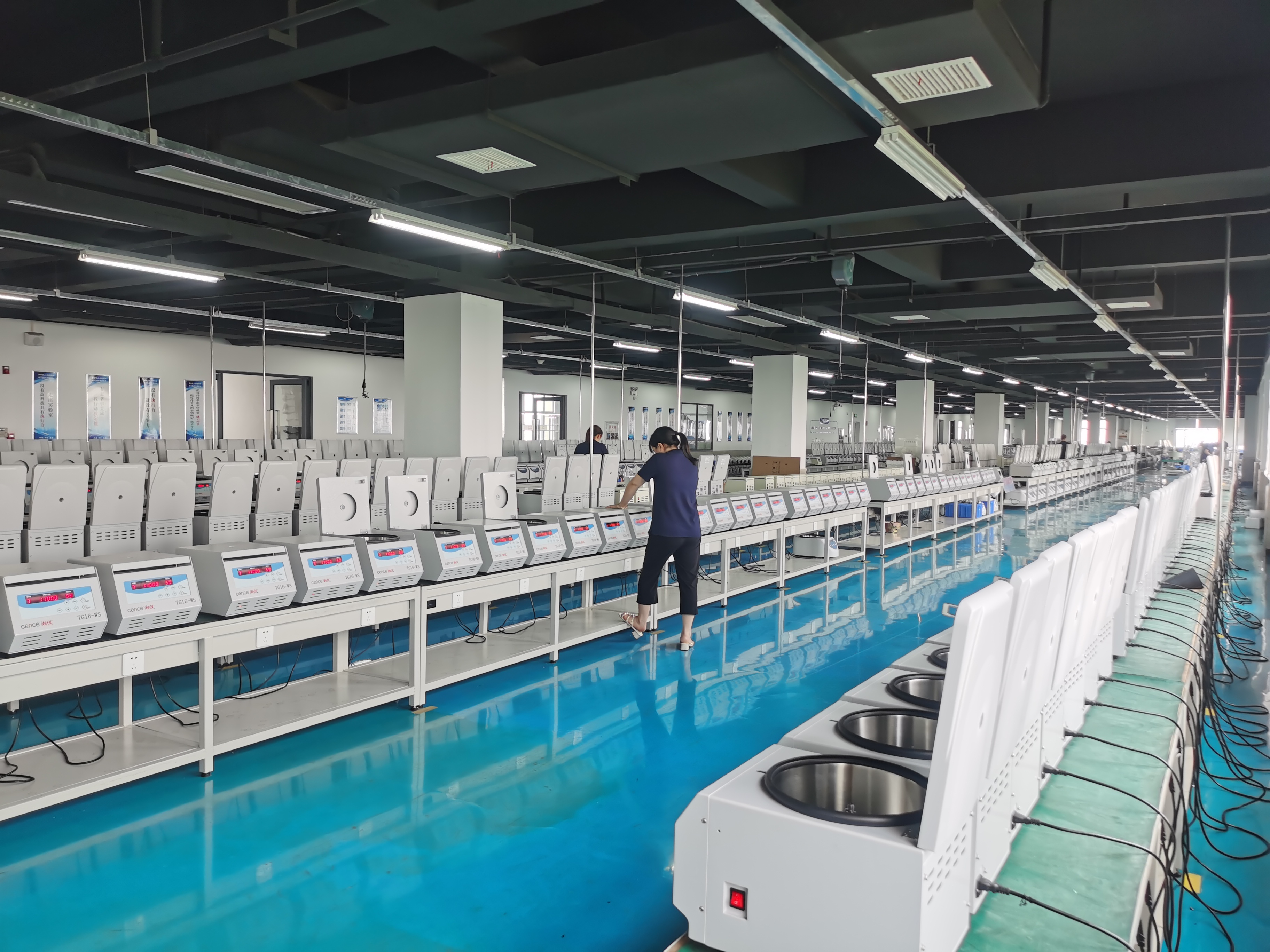Medical Centrifuge
In medical testing, centrifuge is often used as an instrument and equipment for separating serum, plasma, precipitating protein or checking urinary sediment.
Centrifuges can be used to rapidly precipitate the suspended particles in the mixture, so as to separate the components of various substances with different specific gravity.

1. Basic composition of medical centrifuge
The structure of low-speed centrifuge is simple, which is composed of motor, centrifugal rotor, governor, timer, centrifugal casing and base, etc.
High speed (refrigerated) centrifuges and over-speed (refrigerated) centrifuges are usually composed of rotating devices, speed control system, temperature control system, vacuum system, centrifugal chambers, centrifugal heads and safety protection devices, etc.
2. Working principle of medical centrifuge
Centrifugation is a method of separating, concentrating and purifying biological samples by using the centrifugal force of rotating motion and the difference of material sedimentation coefficient or buoyancy density.
Its working principle includes centrifugal filtration and centrifugal sedimentation.
A. Centrifugal filtration refers to that the centrifugal pressure generated by the suspension in the centrifugal field, which acts on the filter medium to make the liquid pass through the filter medium, which is called filtrate, and the solid particles are intercepted on the surface of the filter medium, so as to realize solid-liquid separation.
B. Centrifugal sedimentation is based on the principle of rapid sedimentation and stratification of components with different densities of suspension (or emulsion) in the centrifugal force field, so as to realize liquid-solid (or liquid-liquid) separation.
Centrifuge is a machine that utilizing the powerful centrifugal force generated by the high speed rotation of the centrifuge rotor, to make particles in the liquid overcome proliferation and accelerate sedimentation speed, so that substances that have different sedimentation coefficient and buoyancy density in the sample can be separated.
3. Classification of medical centrifuge
There are many kinds of centrifuges. They can be roughly divided into the following categories:
A. By structure: Bench type medical centrifuge and floor type medical centrifuge.
B. By capacity: micro medical centrifuge, small capacity medical centrifuge and high capacity medical centrifuge.
C. By dimension: mini medical centrifuge, small medical centrifuge, large medical centrifuge.
D. By temperature control: refrigerated medical centrifuge (low temperature medical centrifuge) and ventilated medical centrifuge (normal temperature medical centrifuge).
E. By speed: low speed medical centrifuge, high speed medical centrifuge and ultra high speed medical centrifuge.
1)Low speed medical centrifuge: normally it refers to the medical centrifuges whose speed is less than 10000rpm
2)High speed medical centrifuge: speed between 10000rpm-30000rpm
3)Ultra high speed medical centrifuge: speed higher than 30000rpm
F. By rotor type: swing rotor or bucket type medical centrifuge, fixed-angle rotor or angular swivel type medical centrifuge.
G. By purpose function: blood centrifuge, blood type card centrifuge, urinary sediment centrifuge, capillary centrifuge, cytocentrifuge, pharmaceutical centrifuge, gel bubble treatment centrifuge, etc.
Various types of Cence medical centrifuges
4. Main purpose of medical centrifuge
A. To separate particles suspended in solution.
1)To separate the tangible components in the blood, to concentrate the cells or other tangible components in body fluid, and use them for analysis and determination.
2)To separate the ligand and free ligands that bind to proteins or antibodies.
3) To separate the precipitated proteins in the specimen.
B. To separate two immiscible liquids with different densities.
1) For example, extraction of some components from body fluids with organic solvents.
2) To separate lipid components in the blood, such as the separation of chyle particles and various lipoproteins in plasma.
5. Maintenance of medical centrifuge
When using the centrifuge, it must be maintained regularly to ensure its normal use.
A. The centrifuge must be stably placed on a solid table. The rubber pad on the four feet of the base should be close to the table surface to prevent centrifuge vibration during operation. It is forbidden to put other items on the centrifuge table to prevent the board surface from being scratched.
B. Check the centrifuge tube sleeve regularly. If there are foreign matters and dirt in the tube sleeve, or if the rubber pad falls off, these situations should be handled immediately to maintain the balance of the centrifuge.
C. Check the swivel regularly for corrosion spots, grooves, small cracks, etc. If there is any of them, stop using the swivel and contact the manufacturer or seller.
Regularly maintain the rotating head. In order to prevent the damage of the surface oxide layger when cleaning the rotating head, wet the sponge or cotton cloth with detergent to clean, wash the detergent with distilled water or scrub with 70% alcohol, and then turn it upside down to dry.
After the normal service life of the swivel expires, contact the manufacturer immediately to replace the swivel.
D. Check the wear of commutator and brush, and timely eliminate the carbon dust on the surface of commutator to extend the service life of brush. As for damaged components, such as brushes and springs, they should be replaced in time to ensure that the centrifuge is in good condition.
E. Calibrate the centrifuge regularly to ensure the accuracy of centrifuge speed.
Cence - one of the leading&original medical centrifuge supplier from China




